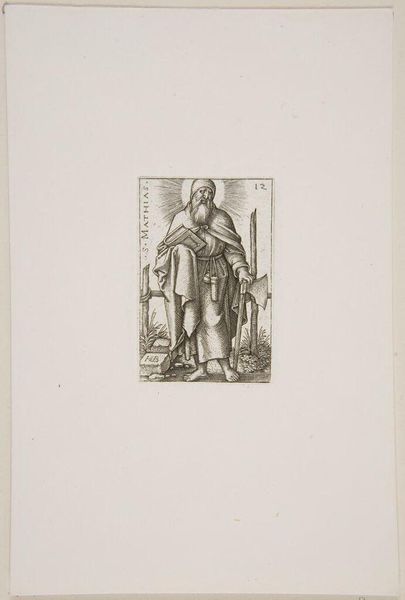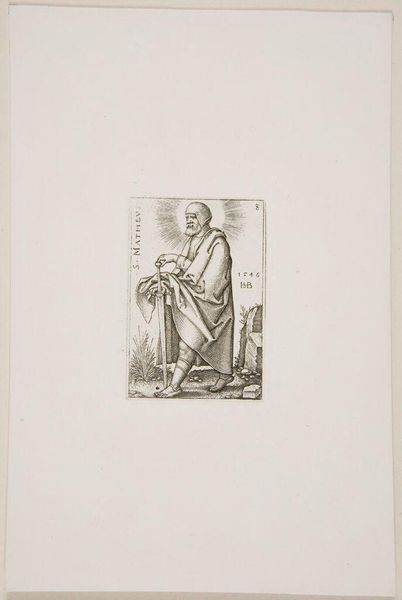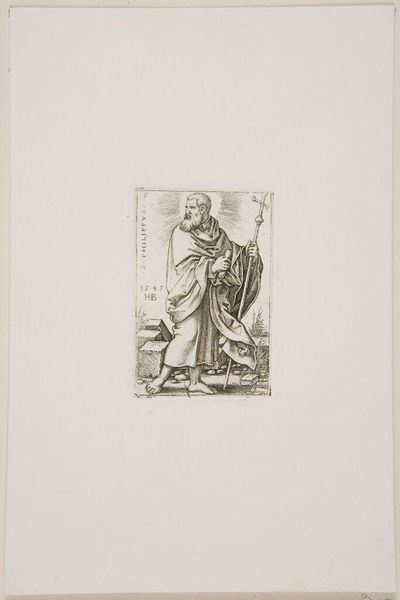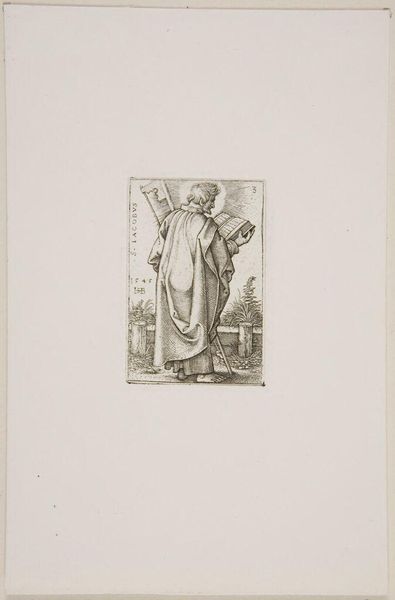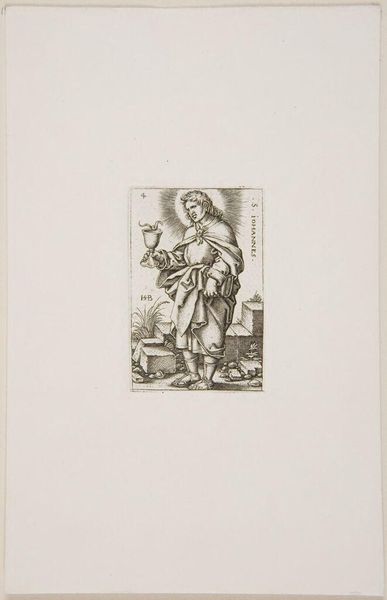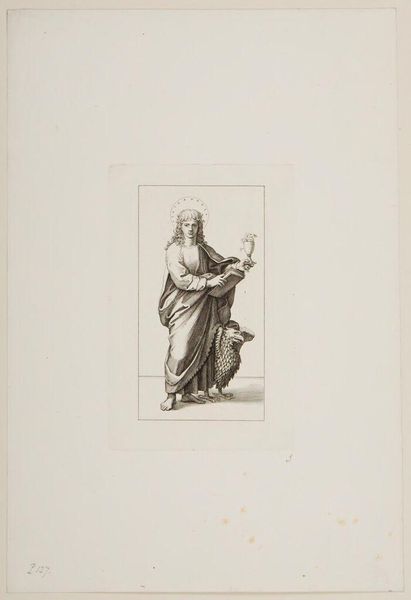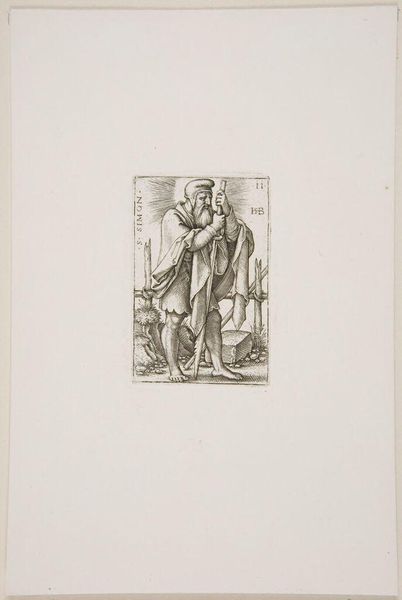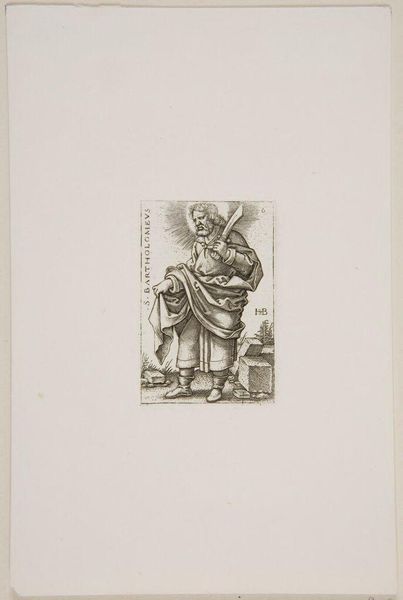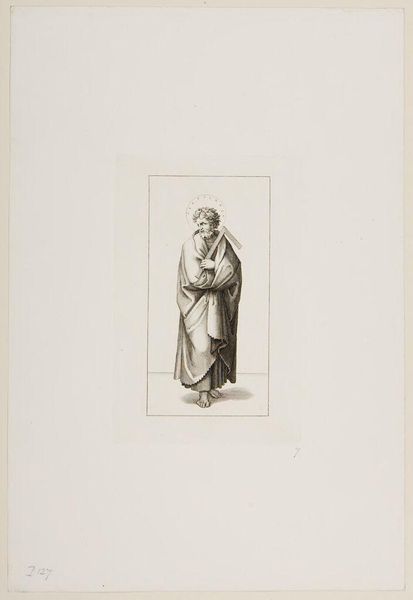
Dimensions: Plate: 4.5 Ã 2 cm (1 3/4 Ã 13/16 in.) Sheet: 12.6 Ã 8.5 cm (4 15/16 Ã 3 3/8 in.)
Copyright: CC0 1.0
Curator: Here we have Sebald Beham's "Saint Thomas," a delicate engraving from around the mid-16th century, currently held in the Harvard Art Museums. Editor: The immediate impression is one of quiet resolve. The halo and spear give him a saintly and martial air, but his expression seems burdened, almost melancholy. Curator: Saint Thomas, often called "Doubting Thomas," carries complex associations. Beham highlights his apostolic role through symbolic objects: the halo signifying divinity, and the spear often connected to his martyrdom. Editor: The spear could also represent the piercing of Christ’s side. Thomas demanded physical proof of the Resurrection; his doubt, then, is not just disbelief but a demand for tangible evidence. How does that tie into the sociopolitical climate? Curator: In Reformation-era Europe, images themselves were contested—were they instruments of faith, or potential idols? Beham's engraving navigates that tension, offering a detailed, symbolic image for contemplation. Editor: So, it's not simply a religious image but a statement about the role of visuality itself in faith and knowledge. The work prompts questions about our own demands for proof and certainty in a world of ambiguity. Curator: Precisely. I think Beham encourages a deeper consideration of what it means to believe, to doubt, and ultimately, to find faith in something beyond the visible. Editor: And the image reminds us to think critically, to question, and to demand accountability.
Comments
No comments
Be the first to comment and join the conversation on the ultimate creative platform.

